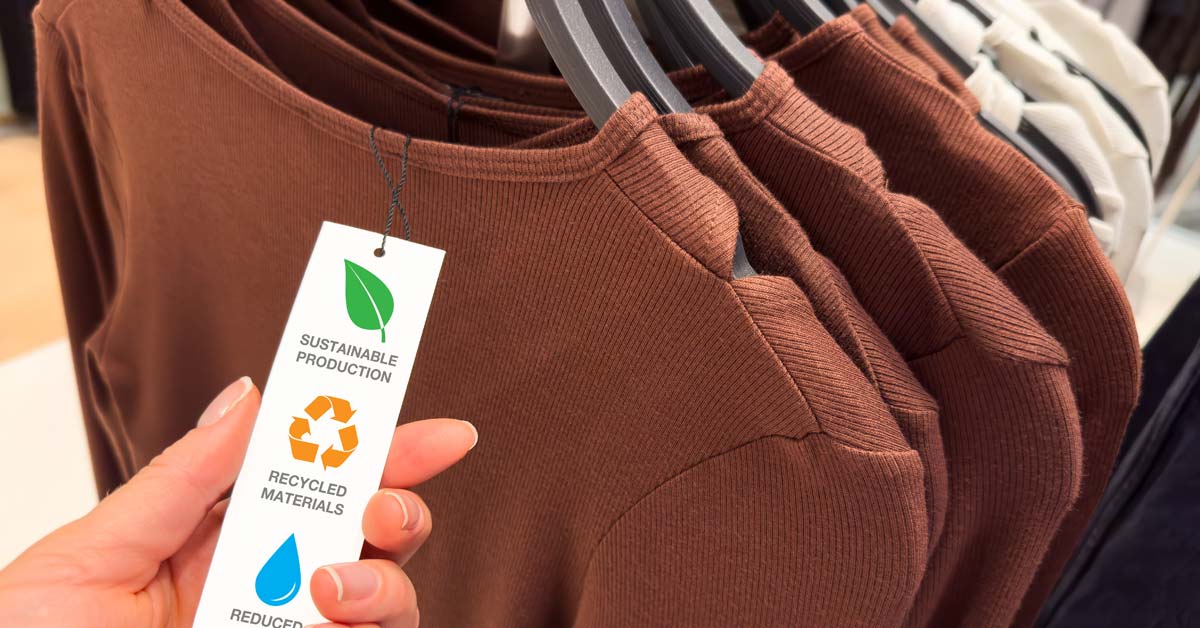3 min read
Sustainable Feedstock for an Ethical Fashion Industry
Tecnon OrbiChem
:
Apr 1, 2022 8:17:18 AM

Fabrics and textiles made from the naturally occurring polymer cellulose are breaking ground in the move towards sustainable fashion.
With the fashion industry contributing up to 10% to global emissions - according to a United Nations Environment Programme (UNEP) report – it’s time for brands to make a stand. Innovative solutions for making the textiles and apparel industries more sustainable are being developed and commercialized at a growing rate.
An eco-friendly process for spinning fibers from dissolved pulp emerged from a project at the German Institutes of Textile and Fibers Research (DITF). The process uses cellulose – from trees – and chitin from crustaceans – to yield blend fibers and cellulosic super-microfibers. Designated HighPerCell, the project was extended to add renewable carbon fibers to replace crude oil-based carbon fibers.
Biomass to High-Value Materials
In collaboration with Japan’s trading company Itochi, Finnish firm Metsa Spring developed a new process for producing textile fiber from the paper-grade pulp. It relies on a supply of never-dried paper-grade pulp and an ionic liquid solvent system. The partnership claims to yield higher output than possible with pulp-dissolving processes. Itochi and Metsa Spring also rely on a green solvent/solvent recovery process. In 2021, the company reached a capacity of 1 tpd at its demonstration plant.
Netherlands-based Cellicon developed a method for extracting sugar from cellulose (bagasse) using ZnCl2 as the solvent – which it says provides a low-cost route.
The process uses hemp, recycled cotton, and cotton-polyester blends from textile waste as feedstock. The cotton can be reworked to form nanocellulose, producing a high-tenacity fiber that is suitable for sanitary applications.
From Synthetics to Sustainable Nonwovens
BAST Fibre Tech (BFT) develops cellulosic fibers from alternative feedstocks. BFT promotes the use of hemp and flax as feedstock to cellulosic fibers. Both are agricultural products that grow quickly and can be by-products from crop production.
In the past, these products have been difficult to use but BFT has already carried out commercial pilot trials with technology providers to make nonwovens. The company aims to be part of a transition away from synthetics so that sustainable nonwovens including cleaning wipes and personal care products can be successfully made. Avoiding marine litter and supporting overall improved environmental responsibility is the goal.
BFT estimates the value of the global nonwovens market at $50 million with 80% of the volume currently satisfied by synthetic fibers but new legislation on plastics as well as carbon emission targets and brand owners/consumer preferences for plastic-free products are all drivers for plastic-free alternatives.
Swedish firm Renewcell dissolves used cotton and other cellulose fibers like viscose from end-of-life garments and textile production waste streams into a slurry. The slurry is dried to sheets of materials branded Circulose. Renewcell packages it into bales for supply back into the textile production value chain as a replacement for virgin materials like cotton, oil, and wood.
Renewcell's market is growing. Iconic denim maker Levi's announced plans to use Circulose in its classic 501 range, having already used Renewcell's technology for some time. A mill with 60 ktpa of pulp from recycled clothing is expected to come online in early 2022.
Waste Not, Want Not
China's Sateri claims to be the world’s largest viscose fiber producer with more than 1.5 million tpa of production. A vertically integrated firm, its portfolio includes viscose and Lyocell fibers, and the Finex brand with up to 20% recycled content.
The potential for agricultural waste feedstock is a focus as Sateri strives for a 100% recycled fiber footprint by 2030. The company warns of a gap to be bridged as many circularity initiatives have not reached a suitable scale. Sateri has a $200 million initiative for both alternative cellulosic fiber feedstocks and manufacturing. The company’s partnerships legacy includes Renewcell, international forestry group Södra and Finnish renewables firm Infinited Fiber Company.
Learning the New 3Rs – Reduce, Reuse and Recycle
In terms of bottlenecks, industry players believe customer awareness challenges remain. Improved education around the cleanliness and (lack of) toxicity of recycled products is essential to uptake, they believe. Despite the issues, manufacturers see a clear route to better environmental performance in cellulose-based textiles.
Research by environmental non-profit enterprise Canopy indicates an ample supply chain for driving a bio-economic shift in fashion feedstocks.
According to the organization, China generates 26 million tpa of textile waste and India’s straw residues amount to 92 million tpa. Canopy predicts that 200 ktpa of next-generation viscose fiber will come onstream within the next two years based on 4-5 producers known to be working on converting mills to use recycled feedstock.
Indications that such initiatives are set to accelerate beyond 2023 is giving the industry a feeling of optimism around its ability to meet its consumers' growing expectations for sustainability.
Boosting Sustainability in Apparel
Earlier this year, a team of scientists at the Massachusetts Institute of Technology discovered a way to turn polyethylene fiber and yarn into textiles using standard textile industry equipment. A thermoplastic polymer, polyethylene is generally found in packaging film, grocery bags and cable insulation. Compared to cotton and polyester, polyethylene fiber production is a lower energy intensive process. Polyethylene is also recyclable.




